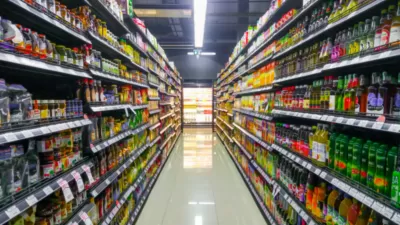A map of Pittsburgh's food deserts illustrates a nationwide problem with food insecurity.

Access to food and the role it can play in a person's life is an absolute vehicle for transformation and integration,” says Christina French, publisher of Table magazine.
In a country of agricultural bounty, it can be difficult to understand how so many people can lack for food. But 15 million American children are food-insecure. In Pittsburgh, 47 percent of the city reportedly lives in one of many food deserts. The problem becomes even more dire when we break down what constitutes "food." In many neighborhoods, the only source of "food" within walking distance is the corner store, markets that typically sell packaged junk food, sodas, and beer.
Reporting for the Pittsburgh Post-Gazette, Melissa McCart offers an explanation for how food desserts have come to be. High labor costs, economic downturn, and competition from big-box superstores such as Walmart have caused many grocery stores to close and consolidate. Residents of affected neighborhoods report travelling more than an hour by bus to reach a proper grocery store. Some of these neighborhoods, such as Oakland, home to the University of Pittsburgh, have streets filled with restaurants and bars, but such options are neither healthy nor affordable.
"Pittsburgh groups have been ramping up their efforts to address food insecurity, with varying degrees of success," reports McCart. Food pantries are expanding as well as focusing more on nutritional education. The Just Harvest program provides credits for EBT users to buy produce at farmers markets. Grow Pittsburgh is initiating community garden projects. Youth Places teaches food literacy to young restaurant workers.
"When people are hungry, the city suffers," McCart points out. "Charities have more to do."
FULL STORY: Food Deserts

Planetizen Federal Action Tracker
A weekly monitor of how Trump’s orders and actions are impacting planners and planning in America.

Maui's Vacation Rental Debate Turns Ugly
Verbal attacks, misinformation campaigns and fistfights plague a high-stakes debate to convert thousands of vacation rentals into long-term housing.

San Francisco Suspends Traffic Calming Amidst Record Deaths
Citing “a challenging fiscal landscape,” the city will cease the program on the heels of 42 traffic deaths, including 24 pedestrians.

Amtrak Rolls Out New Orleans to Alabama “Mardi Gras” Train
The new service will operate morning and evening departures between Mobile and New Orleans.

The Subversive Car-Free Guide to Trump's Great American Road Trip
Car-free ways to access Chicagoland’s best tourist attractions.

San Antonio and Austin are Fusing Into one Massive Megaregion
The region spanning the two central Texas cities is growing fast, posing challenges for local infrastructure and water supplies.
Urban Design for Planners 1: Software Tools
This six-course series explores essential urban design concepts using open source software and equips planners with the tools they need to participate fully in the urban design process.
Planning for Universal Design
Learn the tools for implementing Universal Design in planning regulations.
Heyer Gruel & Associates PA
JM Goldson LLC
Custer County Colorado
City of Camden Redevelopment Agency
City of Astoria
Transportation Research & Education Center (TREC) at Portland State University
Jefferson Parish Government
Camden Redevelopment Agency
City of Claremont





























